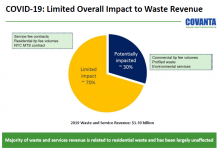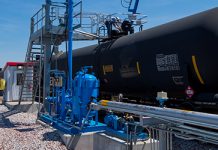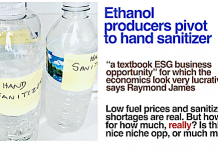Biofuels: Panacea or Pandora’s Box?
Last night, I attended a talk in the Rocky Mountain Institute‘s "Quest for Solutions" lecture series titled "Biofuels: Panacea or Pandora’s Box?" We were told that a video of the event will soon be up on RMI’s website. Most of us were probably there to hear Amory Lovins speak, and no doubt most of the news coverage of the event will focus on him. Amory is a visionary as well as an engaging speaker, and Tom Foust of the National Renewable Energy Lab helped shed light on the science of biofuels, but for stock market investors, the speaker with the most useful insights was without a doubt Mark Wong, CEO of the private corn based ethanol company, Renewable Agricultural Energy (RAE).
Here are some of his insights helped refine my perspective on the ethanol industry:
Ethanol Supply:
There is currently an oversupply of ethanol on the market. As evidence, Mr. Wong cited the fact that in recent months, ethanol blenders have been able to capture most of the federal government’s tax credit, while in the past, most of this subsidy has gone to ethanol producers, a situation which attests to the increased bargaining power of blenders over producers which stems from the current overproduction. He expects the current oversupply to worsen over the next couple years. After the talk I asked him if he felt that his company could make a profit, given the oversupply he cites, and he felt it would be possible if oil says above $70 a barrel. I told him that I wouldn’t be surprised to see $90 oil before the end of the year and he agreed.
If we can extrapolate RAE’s economics to public ethanol companies, traders should think of ethanol stocks as leveraged bets on the oil price, similar to long term oil futures. They are likely to swing between profit and loss mostly due to oil price movements, but the percentage change in profit or loss will be large compared to the percentage change in the price of oil. Given that I think it is likely the price of oil will rise further (and possibly dramatically) this year, that would certainly be a reason for speculators to buy ethanol stocks, now that they have retreated from the massively inflated levels of 1-2 years ago.
Competitive Strategies:
RAE is currently still in the process of adding ethanol plants. Mr. Wong detailed several factors the company considers when choosing plant locations. He mentioned the local supply of corn, access to rail transport, other uses of corn in the area, access to water, and local demand for distiller’s grains, all unsurprising considerations. Interestingly, RAE has chosen to reduce the ethanol yield they get from a bushel of corn in order to provide a better feed (in the form of distiller’s grains with a higher percentage of carbohydrate) for livestock. He didn’t say it, but I infer that one factor in this decision is the current low profitability of ethanol.
More surprising to me was his emphasis on the yield variability of nearby corn crops. I would not have thought of this, and as such, I believe that it may be a useful too for gaining insight into the riskiness of public ethanol producers. A producer working with a highly variable supply of corn feedstock would be considerably riskier than a producer with an assured supply.
The Future
In the future, RAE plans to use anaerobic digestion on their lower value output streams to produce gas which can be used in the distillation process, which should increase the net energy benefits of their process. Mr. Wong also brought up the idea of using fractination to separate the corn into various components before they process it, which he expects will allow them to improve process efficiency. Prior to this, I had only considered fractination as an early step in the process of making cellulosic ethanol. This interested me, because one of the pioneers in biomass fractination technology is PureVision, a private, Fort Lupton based company where I know the management, and this is an existing (as opposed to the nascent cellulosic ethanol market) where they can apply their technology.
DISCLAIMER: The information and trades provided here are for informational purposes only and are not a solicitation to buy or sell any of these securities. Investing involves substantial risk and you should evaluate your own risk levels before you make any investment. Past results are not an indication of future performance. Please take the time to read the full disclaimer here.









For me it is unbelievable that most, if not all so called specialists and stock market pros, believe that ethanol made from corn is the ticket for the future. First thing is why ethanol and what about butanol with its more superior features. second is what alternative crops are avaiable already which drive down the productions cost condirably. On what planet do we live that hardly anyone in the renewable business is able to helicopter him or her to see what alternate possibilities towards the future can fill the bill or will really be able to be an alternative to oil (in quality and quantity)One thing however is sure that the days of corn being the ticket can be counted down.
Hans Thuijs from Budapest
I agree with you that corn is not the ticket to the future, but I don’t think most analysts think so either. The current feeling about corn ethanol actually has a lot of shades of worry, due to rising corn prices. I’d say most analysts agree that the ticket to the future for biofuels is cellulosic and algae based biofuels (butanol is not on the radar yet, although it does seem to be a superior fuel,) but the question is, how far off is that future, and which of the many companies trying to bring these technologies to market will actually suceed and be profitable? Until we can answer those questions, analysts will remain cautious about cellulosic, etc.